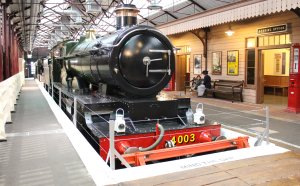 Without doubt the “Star” exhibit of Swindon’s STEAM – Museum of the Great Western Railway is the only surviving GWR Star class locomotive, 4003 Lode Star. Simon of Brookes Castle has very kindly written the following blog post detailing the history of this locomotive, which has been illustrated with pictures taken at the museum by Dave, so this is a real team effort! Without further ado, please read on!
Without doubt the “Star” exhibit of Swindon’s STEAM – Museum of the Great Western Railway is the only surviving GWR Star class locomotive, 4003 Lode Star. Simon of Brookes Castle has very kindly written the following blog post detailing the history of this locomotive, which has been illustrated with pictures taken at the museum by Dave, so this is a real team effort! Without further ado, please read on!
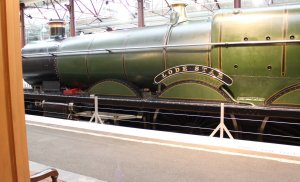 The Great Western Railway was famous for its powerful, smooth and reliable four-cylinder 4-6-0 express locomotives such as the legendary ‘Castles‘ and ‘Kings’. But in the early 1900s the mainstay of the Great Western express were hauled by the two-cylinder 4-6-0 ‘Saint’ class locomotive. Something more powerful was needed to be able to handle the increases in train weights and speed schedules the Great Western envisaged for the late 1900’s. What the GWR’s Chief Mechanical Engineer George Jackson Churchward went on to design would give the Great Western Railway one of the finest express locomotives not just in the country, but the world: the ‘Star’ class.
The Great Western Railway was famous for its powerful, smooth and reliable four-cylinder 4-6-0 express locomotives such as the legendary ‘Castles‘ and ‘Kings’. But in the early 1900s the mainstay of the Great Western express were hauled by the two-cylinder 4-6-0 ‘Saint’ class locomotive. Something more powerful was needed to be able to handle the increases in train weights and speed schedules the Great Western envisaged for the late 1900’s. What the GWR’s Chief Mechanical Engineer George Jackson Churchward went on to design would give the Great Western Railway one of the finest express locomotives not just in the country, but the world: the ‘Star’ class.
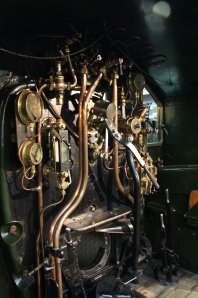 Churchward was impressed by a pair of French compound 4-4-2 locomotives and in particular a De Glehn built by Société Alsacienne de Constructions Mécaniques (SACM) steam engine that had comparative trials on the GWR when developing the prototype of the Saint class. Comparison tests on De Glehn confirmed that the Swindon designed locomotives were as efficient as the French built examples, however the French examples had smoother rides at high speed as a result of them having four cylinders rather than two. This led Churchward to develop his own four cylinder express engine. A prototype locomotive was built in 1906 and given the number 40. Number 40 was built in the 4-4-2 configuration as Churchward had not yet decided on which was the best wheel arrangement for the Great Western . She featured an unusual scissors valve gear, whereas Walschaert’s valve gear were fitted as standard on all other ‘Star’ class locomotives. Number 40 ran unnamed until October 1906 when she became known as ‘North Star’. The first production ‘Star’ class locomotive, 4001 Dog Star, was built in 1907 and had the since standard 4-6-0 wheel arrangement. 40 ‘North Star’ was rebuilt to 4-6-0 configuration in 1909 and also given the curved framing that was built on the second batch of production ‘Star’ class locomotives. 72 Star class locomotives were built in batches until 1923, when they were superseded by the larger and more powerful ‘Castles‘.
Churchward was impressed by a pair of French compound 4-4-2 locomotives and in particular a De Glehn built by Société Alsacienne de Constructions Mécaniques (SACM) steam engine that had comparative trials on the GWR when developing the prototype of the Saint class. Comparison tests on De Glehn confirmed that the Swindon designed locomotives were as efficient as the French built examples, however the French examples had smoother rides at high speed as a result of them having four cylinders rather than two. This led Churchward to develop his own four cylinder express engine. A prototype locomotive was built in 1906 and given the number 40. Number 40 was built in the 4-4-2 configuration as Churchward had not yet decided on which was the best wheel arrangement for the Great Western . She featured an unusual scissors valve gear, whereas Walschaert’s valve gear were fitted as standard on all other ‘Star’ class locomotives. Number 40 ran unnamed until October 1906 when she became known as ‘North Star’. The first production ‘Star’ class locomotive, 4001 Dog Star, was built in 1907 and had the since standard 4-6-0 wheel arrangement. 40 ‘North Star’ was rebuilt to 4-6-0 configuration in 1909 and also given the curved framing that was built on the second batch of production ‘Star’ class locomotives. 72 Star class locomotives were built in batches until 1923, when they were superseded by the larger and more powerful ‘Castles‘.
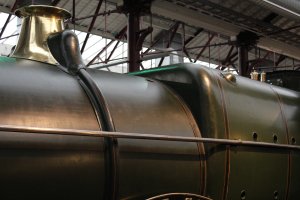
In service the ‘Stars’ proved better suited to high-speed express trains than the ‘Saints’ with not just a smoother ride but also working more efficiently at the top end of the speed range. The ‘Stars’ reputation quickly grew and no other locomotive in the Great Britain was able to match the ‘Stars’ performance figures. The ‘Stars’ cost more to build, maintain and service than the ‘Saints’, but quickly established themselves as the Great Western Railway’s flagship locomotive class.
Over their careers modifications were few, with early locomotives being fitted with new superheater boilers and the inside steam steam pipes replaced on some locomotives either with ‘elbow’ types or those used on the ‘Castles’. It is worth mentioning at this point that this is the reason why the new Hornby ‘Star’ class 00 scale models are different. Locomotives 4061 Glastonbury Abbey (in British Railway livery’s) and 4018 Knight of the Grand Cross (in GWR shirtbutton livery) have the outside elbow steam pipes and 4003 Lode Star (in Great Western crest livery) has the earlier internal steam pipes.
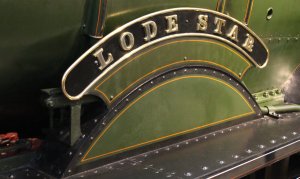 Luckily one example of the ‘Star’ class, 4003 Lode Star, escaped the cutters torch and was preserved by British Railways. The locomotive is now a static, non-working exhibit on loan to STEAM the Great Western Museum in Swindon from the National Railway Museum in York. When she was withdrawn from service she was sent back to Swindon Works where she was built for an overhaul and repainted into her Great Western livery. It is very unlikely that she will ever be restored to working order due to operating conditions but we should be grateful that a locomotive built over a 100 years ago survives.
Luckily one example of the ‘Star’ class, 4003 Lode Star, escaped the cutters torch and was preserved by British Railways. The locomotive is now a static, non-working exhibit on loan to STEAM the Great Western Museum in Swindon from the National Railway Museum in York. When she was withdrawn from service she was sent back to Swindon Works where she was built for an overhaul and repainted into her Great Western livery. It is very unlikely that she will ever be restored to working order due to operating conditions but we should be grateful that a locomotive built over a 100 years ago survives.
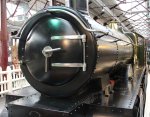

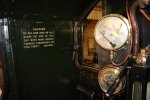
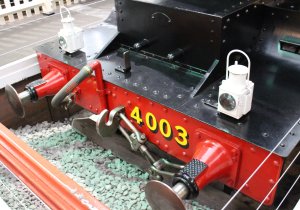
while it is probably true to say that the stars were the finest express locos’ of their day , no star (and few castles ) approached the 1660 idhp produced by LNWR 4-6-0 loco ,Ralph Brocklebank . while on test with the LNWR dynamometer car .-this figure was no fluke ,as a couple of other locos of the same class exceeded this figure , but without the benefit of the dyno car attached . the Claughton was also a 4 cylinder loco ,noted for smooth riding , Sadly , due to WW1 and the subsequent death of G C Bowen Cooke , it’s designer , the loco was never fully developed . in later years , however , when the Schmidt piston ring was abandoned ,they proved capable of efficiency at least as good as the stars
LikeLike